Large Mammals

(Ammotragus lervia)
Habitat: Mauritania
Diet: Grasses, bushes, lichen and leaves, Morocco, southern Algeria, northwest Chad and Sudan
Size: Weight 100 - 300 lbs.
Status: Considered vulnerable in its native habitats, have done remarkably well in areas where they have been introduced including Texas, New Mexico, California, Spain and the Canary Islands
Also called barbary sheep, the males and females are very similar in appearance. Males are somewhat larger and have thicker horns. In northern Africa, their main predators are leopards and caracals. Aoudad have proven to be very efficient at establishing themselves into new habitats, which can be a detriment to plant and mammal populations where land space is limited, such as island habitats. Acclimated to dry desert life, these animals can obtain all of the moisture they need from plants.
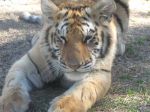
A strong swimmer, these cats are at home in the water as well as the tall elephant grass of their native lands. Bengal tigers have been the focus of research to determine if captive raised cats can be released into the wild. In Africa, several cats have been experimentally introduced into an area set aside for this purpose with good results.
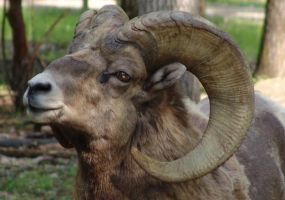
The impressive horns of the ram are well-known and are used to battle other males for breeding rights. These agile animals are well adapted for scrambling up and down mountains to elude predators and find food. Bighorn Sheep are considered good indicators of land health due to the species sensitivity to human caused problems. If sheep are thriving in an area the overall picture of the land is good. The land near Theodore Roosevelt National Park in western North Dakota is a good place to see these animals in the wild.
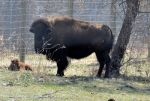
Bison once numbered in the millions across the Great Plains. By the early 1800’s when Lewis and Clark passed through North Dakota, their numbers were rapidly dwindling. Bison can live up to 35 years and are well-suited for life on the prairie. Sometimes called “buffalo,” they are a separate species from the Asian Water Buffalo and African Cape Buffalo that the name buffalo correctly refers to.
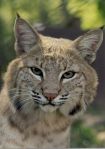
With a stubby tail that ranges in length from 4 to 7 inches, these small cats are aptly named. Seldom seen due to it’s secretive nature, Bobcats are quite common in certain areas where prey is available. There are at least 12 recognized subspecies which accounts for their differing size and coloration. Generally, northern cats are larger. Like many wild cats, they have retractable claws which can be noted in their tracks by not being able to see claw marks.
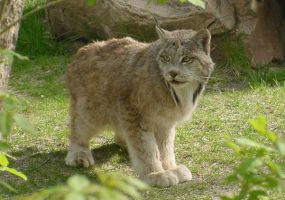
This small cat is slightly larger than the Bobcat, but is much more able to function in the north. With large, furred feet that act as snowshoes in deep snow, these cats can continue hunting their prey where other predators can’t. The main prey of the Canada Lynx is the Snowshoe Hare. When Hare numbers are on the rise, the survival rate of Lynx kittens increases.
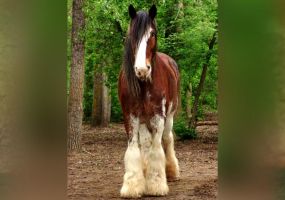

Despite being extensively hunted, the coyote has enlarged its range since humans expanded into their habitat. This is due in large part to its ability to adapt to whatever food and habitat are available. “The barking dog or prairie wolf” other names for this canine, ranged primarily in the western half of North America, but it has been steadily extending its range and is now observed in areas once only occupied by wolves.
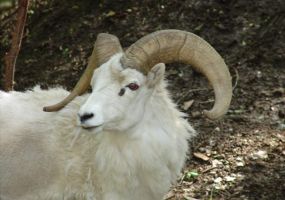
This wild sheep is also called thinhorn sheep due to the ram’s comparatively thinner horns when compared to the Bighorn Sheep. These sheep are quite agile and are at home on steep slopes that allow them to escape from predators that aren’t as adept at traveling over rocky terrain. Their primary predators are wolves, coyotes, black bears, and grizzly bears. Studies have shown that golden eagles take a number of lambs each spring.
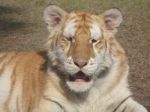
Sometimes called the “strawberry tiger” due to the coloration, this is a color variety of the Bengal tiger and not a separate species. Though not a normally found coloration in the wild, India has records of wild golden tigers which date back as far as the early 1900’s Records indicate that there are less than 30 golden tabby tigers in the world.
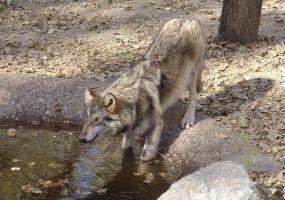
Wolves generally mate for life and typically only the alpha pair will mate in the pack. Packs can range in size from 2 to 35 members. Packs with more members feed on larger prey including moose, caribou and other “mega-vertebrates.” Smaller packs feed on mice, rabbits, deer and similar-sized prey. Howling is used to communicate with other wolves and can be heard for many miles on a calm night.
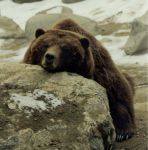
The grizzly is noted for the large hump over the shoulders, which is a muscle mass used to power the front legs in digging. Despite their large size, grizzlies can run at speeds of up to 35 mph. Grizzlies, brown bears and Kodiak Island bears are all scientifically essentially the same bear that differs in size and color due to its diet and weather conditions. This animal was present in our local area in Lewis and Clark days (early 1800’s) and was written about extensively.
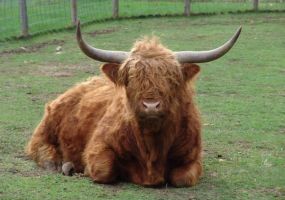
Considered to be the hardiest breed of cattle anywhere in the world, these cattle developed in the harsh climate of the Scottish highlands. They are able to maintain condition and even thrive in conditions where other breeds of cattle would starve. The British royal family maintains a herd of these cattle at the Balmoral Castle Estate grounds, near Braemar, Scotland. The queen considers this the beef animal of choice.
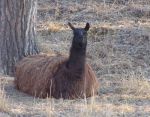

This is the rarest subspecies of the grey wolf and also the smallest. Known as “el lobo,” it has been reintroduced in certain areas of Arizona and New Mexico with mixed results. Also the most genetically distinct subspecies of the grey wolf, their coat is generally a mottled mixture of colors similar in appearance to the coyote.
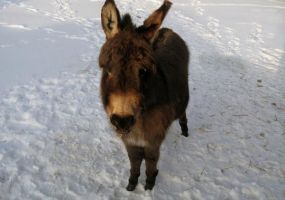
These small donkeys are defined as being less than 36” tall at the withers. Known for their longevity, donkeys can live into their 30’s, with one record of a miniature living 47 years. In the United States, these animals are generally kept on hobby farms. Some donkeys are used as “watch donkeys” to protect sheep and goats from coyotes and foxes, due to the fact that many donkeys naturally dislike dogs and their relatives.
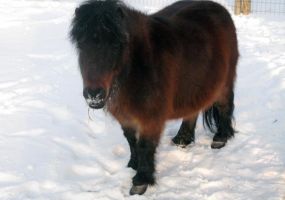
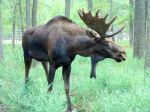


Protective mothers, females have been observed using their sharp horns to defend their young from predators such as black bears and wolves. These animals generally stay in a certain drainage or mountainside for extended periods of time, going up and down in elevation in search of food or places to warm themselves out of the wind and in the sun. Their warm fur allows them to withstand temperatures of 50 below or colder and winds of 100 mph.
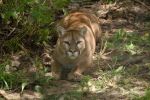
Also called the panther, painter, mountain lion and cougar, this is the world’s 4th largest cat in the world behind the Tiger, Lion and Jaguar. Wolves and Puma are considered natural enemies and generally avoid each other. When they do meet, the solitary larger cat is generally turned away by the pack of wolves. The badlands of North Dakota have all of the ingredients for a healthy population of these cats.
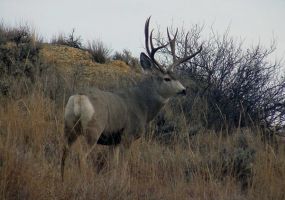
Named for the large mule-like ears, the Mule Deer differs from the Whitetail Deer in other ways as well. The tip of the tail is black and the antlers of the male fork rather than growing from a main beam like Whitetail bucks do. Mule Deer are generally larger than Whitetail Deer. In mountainous areas, these animals will move up and down the mountains seasonally to avoid heavy snows.
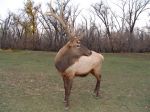
Also called Nelson’s Elk, this is the 2nd largest member of the deer family, Moose being the largest. Males have antlers which are shed and re-grown each year. Elk were deeply imbedded in Native American culture. The Lakota gave an Elk tooth to newborn male children to promote longevity. Teeth were the longest lasting parts to be found in aged carcasses.

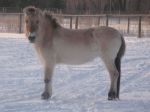
Also called the Mongolian Wild Horse, this is the last remaining truly wild horse in the world. Unlike feral horses such as the mustang in the United States, these horses have never been domesticated . This horse gets its name from Russian General Nikolai Przhevalsky who searched for and observed the horse in 1881 after hearing rumors of its existence. "Przewalski" is the Polish spelling of his name.
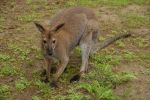
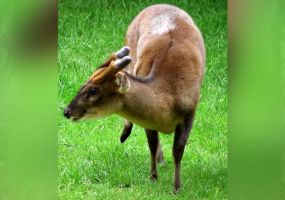
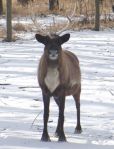
Unlike other members of the deer family, both males and females grow antlers. Their nostrils are specially adapted to warm cold air as it enters. The hair is hollow, providing warmth and the hooves are specially adapted to walk on snow. These animals travel farther than any other terrestrial mammal, going up to 3200 miles during migration. Julius Caesar provided the first written description in the 1st century B.C.
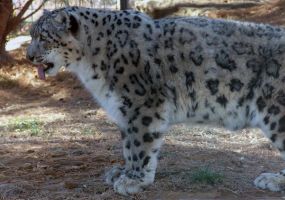
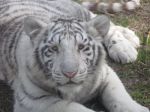
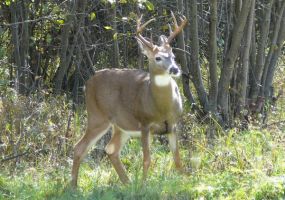
This common deer is named for the flash of white on the tail that is shown when alarmed and running away. Antlers on the male grow from a main beam, differing from the Mule Deer which fork. Around 1930, whitetail deer were thought to number around 30,000 in North America. Due to management including controlled hunting, the numbers have rebounded to nearly 30 million. Bucks shed their antlers each winter, growing a new set each spring.
